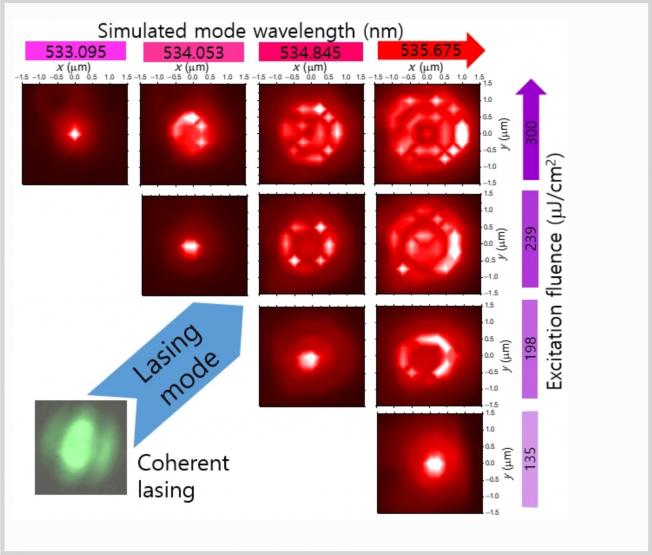Temperature-independent emission in a [(CH3)3NPh]2MnBr4 single crystal analogous to thermally activated delayed fluorescence
Applied Materials Today Elsevier 44 (2025) 102763
Abstract:
We demonstrate a novel defect-mediated, thermally-activated emission mechanism in [(CH3)3NPh]2MnBr4 single crystals, driven by the coexistence of temperature-sensitive shallow traps and temperature-independent deep traps introduced by Br vacancies. Through comprehensive temperature-dependent photoluminescence (PL) and time-resolved PL measurements, combined with first-principles calculations, we reveal that the material exhibits exceptional thermal stability, retaining 67 % of its relative PL quantum yield at room temperature and achieving an absolute quantum yield of ∼38.9 % under optimal excitation conditions. The dual-component PL decay dynamics consist of a fast decay (∼hundreds of ps) governed by shallow traps and a long decay (∼350 μs) dominated by deep traps, creating an energy cascade that efficiently promotes radiative recombination while minimizing non-radiative losses. Our findings provide critical insights into defect-mediated, thermally-sensitive delayed emission mechanisms and establish [(CH3)3NPh]2MnBr4 as a lead-free, thermally stable material with high efficiency, making it an excellent candidate for next-generation optoelectronic applications, including solid-state lighting and temperature-sensitive devices.Interleaved frequency comb by chip-scale acousto-optic phase modulation at polydimethylsiloxane for higher-resolution direct plasmonic comb spectroscopy
Photonix SpringerOpen 6:1 (2025) 12
Abstract:
High-resolution spectroscopy unveils the fundamental physics of quantum states, molecular dynamics, and energy transfers. Ideally, a higher spectral resolution over a broader bandwidth is the prerequisite, but traditional spectroscopic techniques can only partially fulfill this requirement even with a bulky system. Here we report that a multi-frequency acousto-optic phase modulation at a chip-scale of soft polydimethylsiloxane can readily support a 200-times higher 0.5-MHz spectral resolution for the frequency-comb-based spectroscopy, while co-located plasmonic nanostructures mediate the strong light-matter interaction. These results suggest the potential of polydimethylsiloxane acousto-optic phase modulation for cost-effective, compact, multifunctional chip-scale tools in diverse applications such as quantum spectroscopy, high-finesse cavity analysis, and surface plasmonic spectroscopy.In vivo photoacoustic and ultrafast ultrasound Doppler assessment of vascularity for potential thyroid cancer diagnosis: a comprehensive review
JPhys: Photonics IOP Publishing 7:2 (2025) 022002
Abstract:
Thyroid cancer remains prevalent worldwide, with its incidence steadily increasing in recent decades. Although ultrasonography is currently the primary screening method in clinical practice, its relatively low specificity has contributed to increased overdiagnosis. Furthermore, conventional ultrasonography is associated with challenges such as high inter- and intra-observer variability and limited functional imaging capabilities, which together reduce its diagnostic accuracy. To address these limitations, researchers have explored complementary image-based techniques to assess the vascularity surrounding cancerous nodules. This comprehensive review provides an overview of recent clinical trials investigating advanced ultrasound (US)-based imaging techniques for diagnosing thyroid cancer in humans. Specifically, we explore the use of photoacoustic imaging and ultrafast US Doppler techniques, highlighting their potential to enhance triaging accuracy by enabling the analysis of both structural and functional characteristics of thyroid nodules in vivo. Integrating these innovative approaches into existing ultrasonography protocols could significantly enhance the precision of thyroid cancer diagnosis.Harnessing Solar Energy for Ammonia Synthesis from Nitrogen and Seawater Using Oxynitride Semiconductors
Advanced Energy Materials Wiley (2025) 2406160
Abstract:
Green ammonia evolution by photocatalytic means has gained significant attention over recent decades, however, the energy conversion efficiency remains unsatisfactory, and deep mechanistic insights are absent. Here in this work, this challenge is addressed by developing a photothermal system that synthesizes ammonia from nitrogen and natural seawater under simulated solar irradiation, employing ruthenium‐doped barium tantalum oxynitride semiconductors. This method significantly enhances solar‐to‐ammonia conversion efficiency, providing a viable alternative to the energy‐intensive Haber–Bosch process. Optimized at 240 °C, the system achieves an ammonia evolution rate of 5869 µmol g−1 h−1 in natural seawater. Moreover, detailed characterizations have shown that the use of seawater not only leverages an abundant natural resource but also improves the reaction kinetics and overall system stability. The catalysts maintain their activity and structural integrity over multiple cycles, demonstrating both the feasibility and the durability of this innovative system. Achieving a solar‐to‐ammonia efficiency of 13% and an overall energy conversion efficiency of 6.3%, this breakthrough highlights the potential to decentralize ammonia production, enhancing accessibility and sustainability. This approach combines the benefits of thermal and photocatalytic processes, marking a significant advancement in ammonia synthesis technology.Complex Refractive Index Spectrum of CsPbBr 3 Nanocrystals via the Effective Medium Approximation
Nanomaterials MDPI 15:3 (2025) 181



